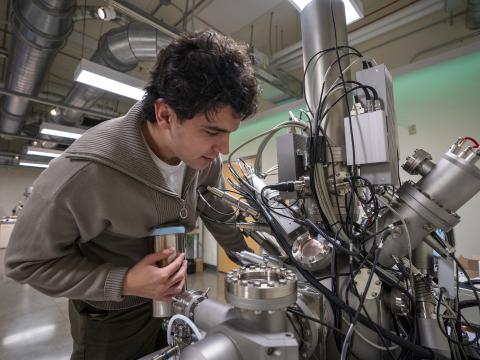ToF-SIMS rasters a pulsed ion beam across an area to produce atomic, molecular, and fragment ions characteristic of the surface and near-surface region. This technique has low detection limits (low parts per million to high parts per billion for atomic species; as low as a femtomole for molecular species), excellent surface sensitivity (information depth is about 2 nanometers), and an extremely high mass resolution. While results are typically semi-quantitative, it can provide valuable insight into subtle chemical variations between similar samples.
Typical Applications
- Identifying the elemental composition and the chemical status near the surface (around 5 angstrom) with high sensitivity (~1ppm) and high mass resolution (~9000)
- Distinguishing the different isotopes of the same element
- Imaging the topography of surface using the secondary electrons
- Mapping chemical species (submicron scale lateral resolution possible in imaging mode)
- Ultra-thin depth profiling
- Identification of trace-level contaminants
Instruments

IONTOF Model IV ToF-SIMS
- 25 keV Bi cluster ion source
- Yields a mass spectrum of the outermost 2 nm of a surface
- Identifies structural units present at the surface (e.g., monomeric components and repeat units)
- Provides fingerprint identification of polymers
- Information on surface degradation and contamination
- Spatial imaging of surface chemistry with a full mass spectrum from every pixel of an image
- High mass resolution (m/Δm > 5000) and analytical sensitivity (down to high ppb)
- Several thousand angstrom destructive elemental depth profiles possible with oxygen or cesium ion sputtering
Instrument Contact: Stephen Golledge, PhD
